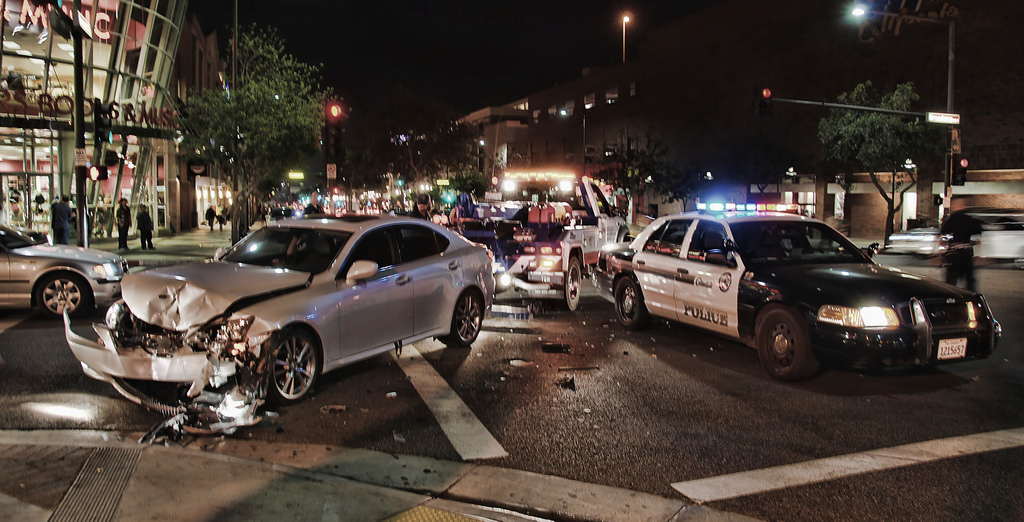Roads in the U.S. were significantly more dangerous for drivers and passengers in 2016. The National Safety Council issued their estimates for 2016 using preliminary data that shows traffic-related injuries and fatalities increased for the first time in nine years. Several factors played a part in the increase of collisions with cell phone use, the economy, and drunk driving as the most frequently reported contributors.
NSC 2016 Traffic Collision Estimates
According to the National Safety Council, U.S. roads saw a 6 percent increase last year from 2015 in motor vehicle deaths, totaling 40,200 roadway fatalities. Last year was the first year since 2007 that annual traffic fatalities reached over 40,000 – a disturbing fact to many road safety advocates. Even more disturbing, the 2016 numbers show a 14 percent jump from 2014 — the largest two-year jump in over fifty years.
Although the summer months are often thought of as “road trip season,” October showed the most fatalities out of any other month with 3,790 deaths taking place in its thirty-one days. Alternatively, January proved to be the least fatal month of 2016 with 2,740 fatalities occurring.
Fatalities weren’t the only issue for U.S. roadways in 2016 – the National Safety Council estimates 4.6 million drivers, passengers, and pedestrians were seriously injured due to traffic collisions. These injuries increased 7 percent from 2015 and involved only injuries that were medically consulted by paramedics or physicians.
Collision-related financial costs also increased last year. In 2016 alone, the estimated cost of vehicle-related deaths, injuries, and property damage totalled $432.5 billion. These costs, which were a 12 percent increase from 2015, include lost wages, medical expenses, employer costs, and administrative costs.
Leading Causes of Increased Accidents
The National Safety Council conducted a survey showing what risky behaviors drivers are comfortable with behind the wheel, and while 83 percent of those surveyed believe driving is a safety concern, an alarming amount of them believe the following were acceptable:
- (64%) Speeding
- (47%) Texting manually or with voice controls
- (13%) Driving under the influence of marijuana
- (10%) Driving after they have had too much alcohol
Many safety experts are attributing the rising collision rates to the growing popularity of smartphones. As distraction is coming in many forms, cell phones are leading the pack in relation to distracted driving. Even though manufacturers are rolling out new safety features such as anti-lock brakes, back-up cameras, electronic stability control, and more airbags — drivers continue to engage in unsafe behavior that typically can’t be controlled by an added feature.
Government officials and safety experts are also attributing the rise in roadside injuries and fatalities to something uncommon — lower gas prices. Reports indicate that an improving American economy coupled with decreased fuel prices accounted for a 3 percent increase in vehicle miles driven in 2016. More miles driven means more chances for a collision to occur – which is exactly what happened.
How Drivers Can Avoid Collisions
According to Deborah A.P. Hersman, National Safety Council President, “Americans believe there is nothing we can do to stop crashes from happening, but that isn’t true.” While it may seem obvious, the best way to avoid a collision is to keep your attention on the road at all times and obey all laws related to motorized vehicles. This includes:
- Making sure everyone in the vehicle has their seatbelt fastened
- Placing your cell phone in the glove compartment or out of your immediate reach while you’re driving
- Obeying all speed limits and traffic laws – especially on high capacity roads such as freeways and arterials
- Take extra precaution when pedestrians are present and give them the right of way when appropriate
- Perform proper maintenance on your vehicle to ensure its as safe possible in the event of a collision
- Not getting behind the wheel if you are in anyway impaired from alcohol or drugs – even if you are technically under the legal BAC limit
Although these tips are commonly known, easily avoided collisions continue to occur on our roads. It takes the driving community as a whole to take responsibility for what they do behind the wheel, in order to make U.S. roads a safer place for drivers, pedestrians and passengers. Safer drivers working in concert with legislators can help put a stop to vehicle-related fatalities and injuries. The best way for drivers and legislators to work together is to let your local representatives know if you have an idea on how to reduce collisions, fatalities, and injuries on U.S. roadways.





No Comment